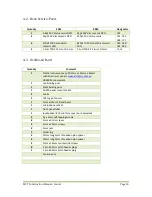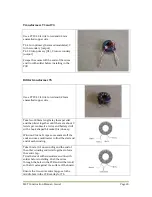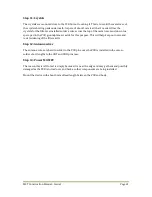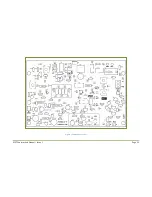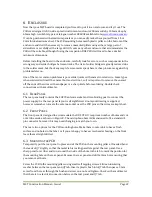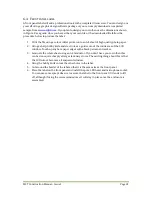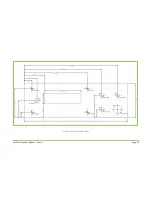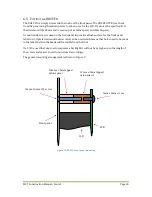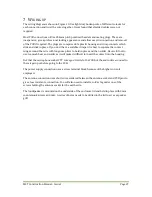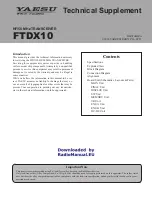
MST Construction Manual – Issue 1
Page 30
8.3
R
ECEIVE
Set the VFO to a frequency in the middle of the band you will be using.
Turn the AF gain control to halfway. You should hear some low level hiss come from the
speaker indicating that the audio stages are working.
Connect a frequency counter at the emitter of transistor Q2. Adjust trimmer capacitor
TC1 until the frequency is 10.000MHz. This is the carrier (BFO) frequency and is placed
on the upper skirt of the crystal filter to produce a Lower Sideband signal.
Remove the dummy load and apply a moderate RF signal to the antenna connector and
tune the VFO until a clear tone is heard in the speaker. Carefully adjust the slugs in coils
T2 and T3 for maximum volume. As you approach maximum you will need to turn the
AF gain down and probably the RF signal level as well to avoid overload. You can
experiment with the position of the two slugs to obtain a specific bandwidth, but in
general, peaking at the middle of the band will be satisfactory.
8.4
T
RANSMIT
Remove the RF signal source and reconnect the dummy load. It will be an advantage to
have either a QRP power meter or oscilloscope to obtain an indication of power output.
Turn the mic gain control fully anticlockwise.
Briefly switch to transmit mode by shorting the PTT contacts. Check the power supply
current. This is the quiescent transmit current and should be about 100mA higher than
the receive current. Anything far from this indicates a problem and should be
investigated.
Operate the PTT and using a screwdriver slowly rotate the bias trimpot clockwise. The
power supply current should rise gradually and smoothly. Keep increasing until the
power supply current is 150mA higher than quiescent transmit current. This increase is
a result of the current being drawn by the output MOSFET as it starts to conduct and
move into linear operation.
Adjust carrier balance controls TC2 and VR1 for minimum power output. There is some
interaction so you will need to go back and forwards to obtain maximum balance.
Apply an audio signal generator to the mic socket set to 1KHz at around 100mV. Operate
the PTT and slowly increase the mic gain while monitoring the power output. When
around 1 Watt is indicated carefully adjust the slugs in coils T7 and T8 for maximum
output. You may need to reduce the mic gain to find the peak. Once the coils are peaked
operate the mic gain up and down while monitoring the power output. The power
output should change smoothly and you should be able to easily achieve 5 Watts output.
Take note of the RF power LED and verify that it illuminates and changes intensity with
varying power output.
Plug in a microphone and verify operation. You will now be able to monitor yourself
with a receiver placed nearby using a small length of wire as an antenna.
Summary of Contents for MST400
Page 1: ...MST Construction Manual Issue 1 Page 1 MST CONSTRUCTION MANUAL ...
Page 9: ...MST Construction Manual Issue 1 Page 9 Figure 2 SSB generator ...
Page 10: ...MST Construction Manual Issue 1 Page 10 Figure 3 Transmit mixer ...
Page 11: ...MST Construction Manual Issue 1 Page 11 Figure 4 Power amplifier ...
Page 12: ...MST Construction Manual Issue 1 Page 12 Figure 5 Receive mixer ...
Page 13: ...MST Construction Manual Issue 1 Page 13 Figure 6 Receive audio ...
Page 22: ...MST Construction Manual Issue 1 Page 22 Figure 7 Component overlay ...
Page 25: ...MST Construction Manual Issue 1 Page 25 Figure 8 Front panel drilling guide ...

